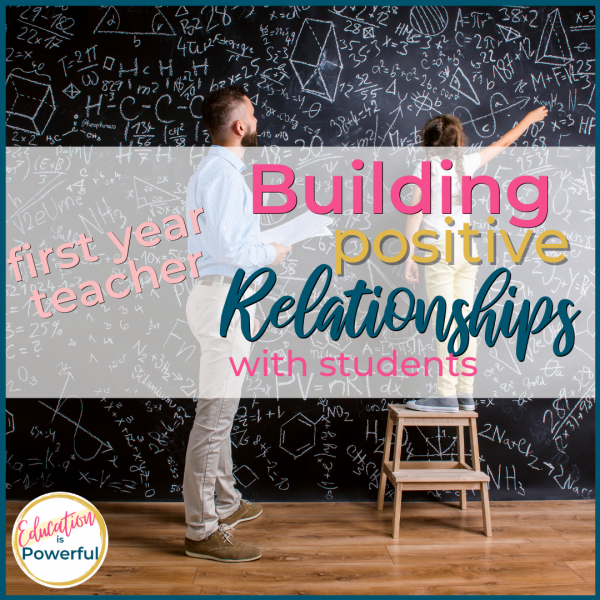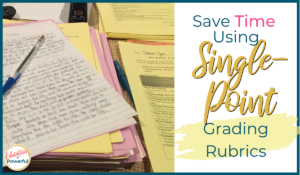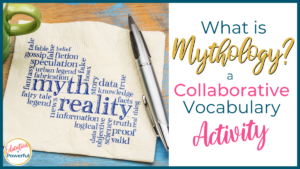It’s not a surprise that in almost every book about teaching and instruction, one of the first chapters is about how to build positive relationships with students. As a new teacher, I was so wrapped up and concerned with perfect lessons and dealing with misbehavior, that I neglected to really get to know students.
My Own Experiences in Building Positive Relationships with Students
I started my teaching career working with Youth in Custody. Most of these students were gang members, drug addicts and dealers, and sex offenders. For them, every other teacher they had treated them as if they always the “bad” kid in class and relegated them to the back row. In our school, they were surrounded by students like them, who had the same struggles. They were no longer the exception.
I learned a lot in my 5 years there. And our school was revolutionary. One of our major tenets as that if students didn’t like and trust us, then they couldn’t learn from us. I learned to know students and become partners with students in their learning.
Flash forward, years later, I was at a large mainstream, suburban, upper-middle class high school. One of my students had an intense love with his hair. He would fluff out his naturally curly hair to create an impressive puff. Talifa (name changed) was boisterous, easily distracted, and loved to laugh. There were times I struggled with him because he could easily district the entire class.
One day he came into class with a knit cap on his head, which were against the school dress code. I immediately asked him to remove it. He whispered to me, “Miss, can we talk outside.” When we got to the hall, he took off his hat and his mother as a form of punishment for his poor grades had chopped sections of his hair out so that you could see his scalp. He was expected to go to school, knowing the no-hat rule, and suffer humiliation. He asked if he could keep his hat on. And of course I said YES!
When I think back on that experience, I realized a couple things:
- My relationship with my students allowed him to feel comfortable asking me for the exception, but he also knew that I was a rule follower. Students didn’t just get to do whatever they wanted.
- When I told the class that Talifa could keep his hat on and that it was between me and him, students saw this as fair because of the relationships I had built with the entire class.
- I saw Talifa very differently after that. I increased my praise and feedback. I decided to not get upset when he spoke out and instead searched for ways I could include him preemptively. And consequently, his grades went up in my class – not because of punishment, but because I was putting deposits into him.
- Relationships mattered more than the standard I was teaching that day. Talifa mattered more than a school rule.
So the real question is how do we build positive relationships with students?
Using the “Warm Firm” in Building Positive Relationships with Students
There is a common piece of advice said to new teachers that I 1000% disagree with. And that is,
“Don’t smile until January.”
It was said to me. It is wrong. It implies that you can’t be friendly and have classroom management.
What teachers instead need to learn is the “Warm Firm” approach. It is essentially this – you care about students and you have high expectations. Edutopia calls it a Warm Demander and when we practice this method of communicating with students, we increase equity in our classrooms as well.
It is also essential to make your class a place where students can have fun – keep learning, but also have fun. This doesn’t mean that you have parties and watch movies. Students who are engaged in class, learn more and want to come back. When students want to be in your class, you are able to build relationships with them that you can draw on later.
How do I Get to Know 200 Students and Build a Positive Relationship With Them?
As I mentioned in my Must Have Back to School Supplies blog, I use index cards, positive postcards, and seating chart notes to get to know students and build relationships with them. Even high school students love getting the postcard from me and showing it to their family.
The key to any system is writing it down. With so many students, I can’t remember everyone and we all know that the details matter – how you say their name, what they like to do in their free time, or funny moments that happen in class. Write it down, review it, bring it up in conversation. It will make a difference.
I also actively practice the two by ten strategy with my students who have behavior issues. As with Talifa, by my getting to know him better in that moment, I viewed his behavior differently. I changed, I encouraged, I was more positive. And in turn, he changed as well.
How Positive Feedback Can Help You Build Positive Relationships with Students
In Engagement by Design by Fisher, Frey, and Quaglia (2018) they emphasize giving feedback to students, but also using more positive feedback than corrective feedback – specifically 4 positive to every 1 corrective (p. 39).
At first, this seems impossible, but it helps our classrooms become places where our students are willing to take risks and trust us, because we are encouraging and positive and not always pointing out where they go wrong.
It is by doing this that we are building positive deposits in our student bank account. And one day, in one lesson, we are going to have to withdraw from those deposits. Maybe it is because they are really struggling with their behavior, but it might also be when students are struggling with a concept.
Advanced and deep learning like Project Based Learning (PBL) relies heavily of building positive relationships with students. As students apply concepts, try new things, reach out to the community, it is going to be difficult and maybe even discouraging. The positive student-teacher relationship helps teachers guide students because students trust teachers and are more willing to make mistakes.
Positive Teacher – Student Relationships Lead to Academic Success
Along with Project Based Learning, personalized learning is becoming more and more important in our education system. Personalized learning involves teachers not only understanding where students are at academically when it comes to standards, but allowing for student voice, choice, path, and place (Edutopia).
Ultimately our relationships with students can help students have a growth mindset. With a growth mindset, students can take risks, knowing that failure is okay. There can be a sense of safety in failure.
Speaking of growth mindset and building positive relationships with students, you need to also give yourself as a teacher grace, space, and time. It isn’t easy building relationships with students and it takes time. You may completely fail one day. You may get short or sarcastic with the student who asks you for the 10th time in 3 minutes what page you are on. It happens. It will happen. No one is perfect. But if you are trying to build relationships with students, you can apologize and move on. You can model growth. You can be an example for students because we all know that no one is perfect and we will all make mistakes.


